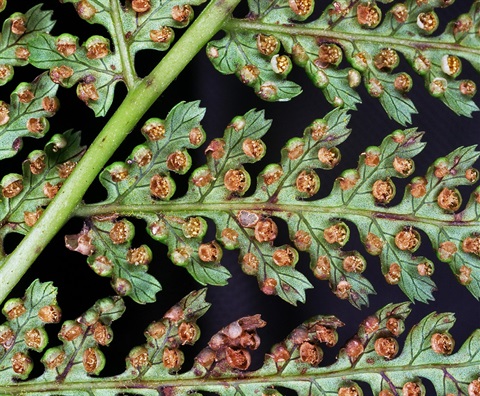
Dicksonia antarctica
Soft Tree-fern, Komba'derk
Erect, thick trunk covered in fibrous roots, often buttressed at base.
Additional information
- FamilyDicksoniaceae
- StoreyMiddle storey
- Size2-12 m high
- Plant groupingFerns & Fern Allies
- LeavesFronds narrow, tapering each end, to 4 m, divided 3 times, upper surface hairy, margins with curved teeth (sterile) or lobed. Stalk short, thick dark brown, coarse hairs along base.
- FlowersNon-flowering. Fertile segments (pinnae) have rounded lobes with one round spore cluster per lobe in a 2-lipped structure on the margin.
- Bird attractingNo
- Butterfly attractingNo
- Frog habitatNo
- Growing conditionsMoist shaded gullies and rainforests in humus rich soil. Partial to full shade.
- Garden useExcellent in ferneries or containers provided it does not dry out. Commonly purchased as a bare root trunk. Fronds burn and turn yellow in full sun.
- Commercially availableGenerally
- Conservation statusLocally common within its preferred growing conditions
- Aboriginal Use Food - pith from the crown eaten raw or roasted
- Related speciesDistinguished from Cyathea in that the base of the frond stalks (stipes) are smooth and bearded, the trunk is covered in matted roots and the spore cases are on the frond margin in a 2-lipped structure.
Photo Gallery
Photographer/s: 1 Marilyn Bull ©; 2, 3 Peter Kinchington ©
Plant Communities